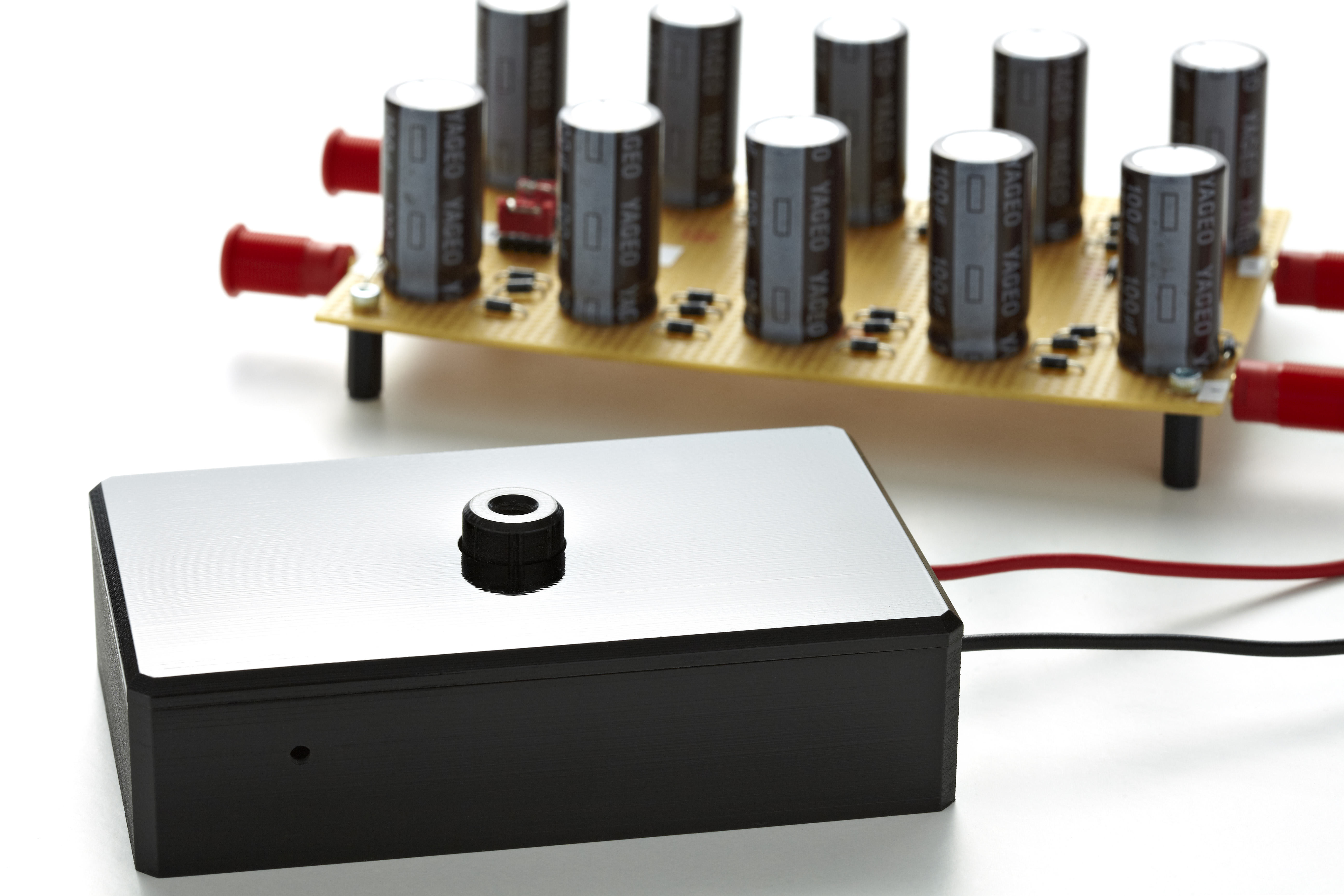Objective & Challenge:
Using functional materials to implement active solutions for improving damping properties, and reduce space requirements at the same time. Electroactive elastomers (EAE) are particularly suited to these applications and have become a focus of attention amongst industrial users. Until now, there have been few providers of out-of-the-box EAE components, and the majority of investigations were conducted with manually produced laboratory samples. Hence the challenge was to develop standardized, reliable systems suitable for industrial use.
Fraunhofer LBF has made use of the unique properties of electroactive elastomers to develop a novel stack actuator. A demonstration system shows the potential inherent in this approach. Work currently focuses on the development of a larger system.
High extensions, low forces:
Like piezo ceramics, electroactive elastomers are "smart materials" - materials which undergo mechanical deformation when an electrical field is applied. Compared to piezo transducers, EAE transducers exhibit relatively high extension at substantially lower forces. Depending on the elastomer material used, different performance characteristics are obtained. The commonly used dielectric silicones are comparable to natural muscles in terms of force buildup and extension capability and are therefore often referred to as "artificial muscles".
The solution developed by Fraunhofer LBF uses thin, finely perforated metal electrodes to apply an electrical voltage. This enables the elastomer to locally expand into these hollow spaces in the presence of an electrical field, thus ensuring the macroscopic compressibility of the setup. The high electrical conductivity of the electrodes reduces resistive losses to a large extent and enables the actuator to be operated at higher frequencies.
Due to the fact that the electrodes do not elongate, mechanical attachment to the surrounding structure can be achieved without any performance loss. The hole geometry and the position of the electrodes relative to one another enables systematic tuning and optimization of the actuator performance. Using numerical models and various optimization procedures, an ideal geometry for a given application is to be calculated and produced.
A wealth of applications:
In principle, such a transducer can not only be used as an actuator, but also as an adaptive stiffness element, as a sensor and generator element. When an electrical voltage is applied, the increasing contact surfaces result in increasing stiffness, a feature which can be used, for example, for adjustment of an adaptive absorber, and also in a considerable increase in capacitance, which enables both sensor and generator applications. This opens up potential applications in particular in the area of energy harvesting, involving small amplitudes, where mechanical energy from vibrations present in the environment is converted into electrical energy. However, research scientists also aim to make use of large movements such as those resulting from ocean waves, to generate electrical power.
The Fraunhofer LBF demonstration system comprises 50 active layers each with a thickness of 140 µm and a footprint of 60 x 60 mm. With a drive voltage of around 1.5 kV, quasi-static extensions of several percent can be achieved. It is expected that a reduction of the layer thickness may lead to a further increase in performance.
 Fraunhofer Institute for Structural Durability and System Reliability LBF
Fraunhofer Institute for Structural Durability and System Reliability LBF

